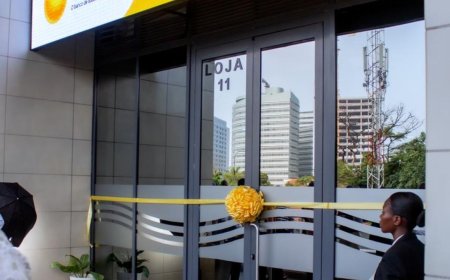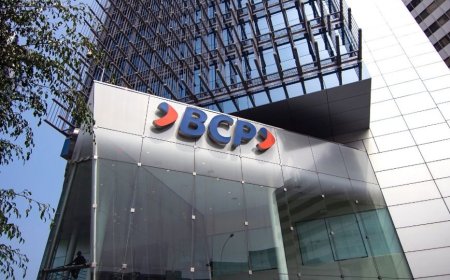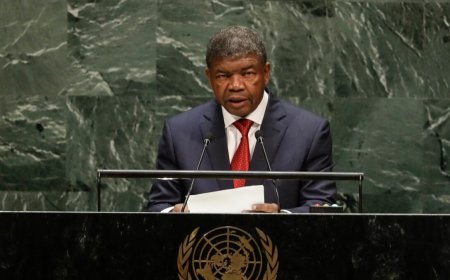Angolan banks maintain their ‘appetite’ for Treasury bonds, with loans of more than 8 billion Kwanzas to the State.
Since 2014, with the start of the currency crisis, domestic banking market operators have preferred to release credit to finance the State rather than families and companies. This measure is justified by the lower degree of risk when the money is invested in bonds, in addition to the fact that the rates are more attractive.
The 23 commercial banks operating in the national banking sector closed the 2023 financial year with a total of 8.021 billion Kwanzas of their assets invested in public bonds, thus revealing the operators’ desire for this type of financing, Kieto Economia found from a compilation by Deloitte Angola.
Entitled ‘Banking in Analysis 2024’, the document shows that the ‘appetite’ of commercial banks continues to grow in this type of business, since the more than 8 billion Kwanzas represent an increase of approximately 37.6%, compared to the 2022 financial year, not unrelated to the fact of the strong devaluation of the Kwanza against the US Dollar and the Euro, observed in 2023, since assets expressed in foreign currency and/or indexed to foreign currency appreciated significantly compared to 2022.
The document does not explain the reason for the strong interest of commercial banks in this type of business, but, to Kieto Economia, several analysts and professionals from systemic banks continue to argue that investing in Treasury bonds is even more profitable and safer than investing in traditional credit.
In other words, banks prefer to lend resources to the State rather than to families, because they consider that bonds carry less risk than bank credit, which depends on several factors, such as currency devaluation and inflation rates. In practice, in a crisis scenario, banks are more likely to recover their investments given to the State than to families, who, with the crisis or rising prices, have more difficulty honouring their commitments to the banks.
Individually, the Angolan Investment Bank (BAI) continues to lead the list of entities that absorb the most State bonds. In other words, BAI is ahead of the banks with an investment of close to 2 billion Kwanzas in loans to the State in the 2023 financial year, which represents a 25% share of the total of this type of asset.
In turn, BFA, BPC, Atlântico and BIC close the TOP 5 of this ranking, with no change in positions compared to 2022. Additionally, at the end of 2023, the five largest banks, in terms of assets, represented 72% of the total assets of the banks under study, which represents a residual increase in concentration of 71% in 2022, with an increase in securities of around 36%, with the greatest growth being concentrated in BAI, BIC and BFA, which saw securities increase by around 1.26 billion kwanzas, which corresponds to 59% of the total growth in securities compared to 2022.
As for the relative positions of the remaining banks, BCI rose four positions, which became part of the TOP 10 in 2023, due to the increase in investment in public debt, with the counterpart being the reduction from the Cash and Cash equivalents in central banks heading.
In the opposite direction, we had BCGA and BDA, which dropped 3 positions in the ranking, now occupying the 9th and 14th positions.
Banks provide less credit compared to securities
While the 23 commercial banks operating in the national banking sector closed the 2023 financial year preferring to invest a total of 8.021 trillion Kwanzas of their assets in public securities, on the contrary, this group of banking operators only released 4.9 trillion Kwanzas for traditional credit, both for families and companies.
This amount released corresponds to a significant increase of around 40% compared to 2022, with the variation between 2021 and 2022 standing at 12.9%. According to Deloitte, the evolution presented considers the unaudited financial information relating to Banco Económico, with reference to December 31, 2022 and 2023.
The evolution of net credit has shown an upward trend since 2019, driven by the measures to stimulate direct financing to the economy adopted by the Executive in 2021 to support the productive sector of the economy and which has been reinforced by some measures of the National Bank of Angola, as well as the reinforcement of the intervention of the Credit Guarantee Fund, through the issuance of public guarantees in favor of companies and entrepreneurs.
Angolan banks maintain their ‘appetite’ for Treasury bonds, with loans of more than 8 billion Kwanzas to the State
Since 2014, with the start of the currency crisis, domestic banking market operators have preferred to release credit to finance the State rather than families and companies. This measure is justified by the lower degree of risk when the money is invested in bonds, in addition to the fact that the rates are more attractive.

The 23 commercial banks operating in the national banking sector closed the 2023 financial year with a total of 8.021 billion Kwanzas of their assets invested in public bonds, thus revealing the operators’ desire for this type of financing, Kieto Economia found from a compilation by Deloitte Angola.
Entitled ‘Banking in Analysis 2024’, the document shows that the ‘appetite’ of commercial banks continues to grow in this type of business, since the more than 8 billion Kwanzas represent an increase of approximately 37.6%, compared to the 2022 financial year, not unrelated to the fact of the strong devaluation of the Kwanza against the US Dollar and the Euro, observed in 2023, since assets expressed in foreign currency and/or indexed to foreign currency appreciated significantly compared to 2022.
The document does not explain the reason for the strong interest of commercial banks in this type of business, but, to Kieto Economia, several analysts and professionals from systemic banks continue to argue that investing in Treasury bonds is even more profitable and safer than investing in traditional credit.
In other words, banks prefer to lend resources to the State rather than to families, because they consider that bonds carry less risk than bank credit, which depends on several factors, such as currency devaluation and inflation rates. In practice, in a crisis scenario, banks are more likely to recover their investments given to the State than to families, who, with the crisis or rising prices, have more difficulty honouring their commitments to the banks.
Individually, the Angolan Investment Bank (BAI) continues to lead the list of entities that absorb the most State bonds. In other words, BAI is ahead of the banks with an investment of close to 2 billion Kwanzas in loans to the State in the 2023 financial year, which represents a 25% share of the total of this type of asset.
In turn, BFA, BPC, Atlântico and BIC close the TOP 5 of this ranking, with no change in positions compared to 2022. Additionally, at the end of 2023, the five largest banks, in terms of assets, represented 72% of the total assets of the banks under study, which represents a residual increase in concentration of 71% in 2022, with an increase in securities of around 36%, with the greatest growth being concentrated in BAI, BIC and BFA, which saw securities increase by around 1.26 billion kwanzas, which corresponds to 59% of the total growth in securities compared to 2022.
As for the relative positions of the remaining banks, BCI rose four positions, which became part of the TOP 10 in 2023, due to the increase in investment in public debt, with the counterpart being the reduction from the Cash and Cash equivalents in central banks heading.
In the opposite direction, we had BCGA and BDA, which dropped 3 positions in the ranking, now occupying the 9th and 14th positions.
Banks provide less credit compared to securities
While the 23 commercial banks operating in the national banking sector closed the 2023 financial year preferring to invest a total of 8.021 trillion Kwanzas of their assets in public securities, on the contrary, this group of banking operators only released 4.9 trillion Kwanzas for traditional credit, both for families and companies.
This amount released corresponds to a significant increase of around 40% compared to 2022, with the variation between 2021 and 2022 standing at 12.9%. According to Deloitte, the evolution presented considers the unaudited financial information relating to Banco Económico, with reference to December 31, 2022 and 2023.
The evolution of net credit has shown an upward trend since 2019, driven by the measures to stimulate direct financing to the economy adopted by the Executive in 2021 to support the productive sector of the economy and which has been reinforced by some measures of the National Bank of Angola, as well as the reinforcement of the intervention of the Credit Guarantee Fund, through the issuance of public guarantees in favor of companies and entrepreneurs.
What's Your Reaction?













































